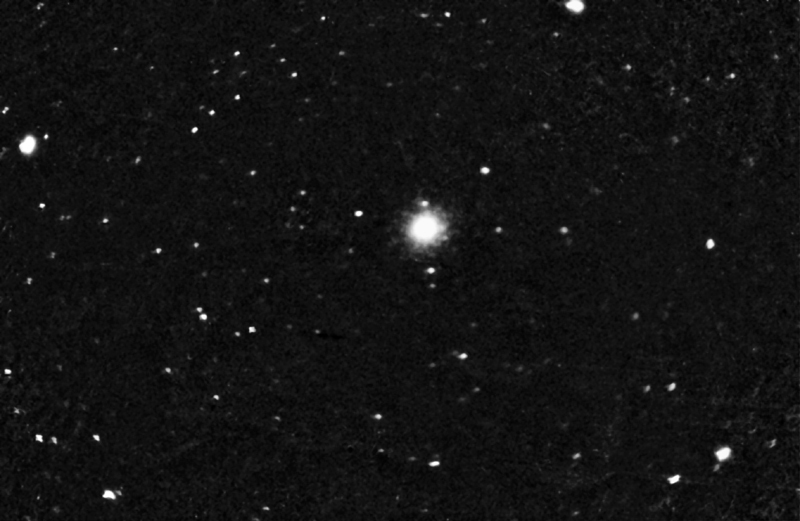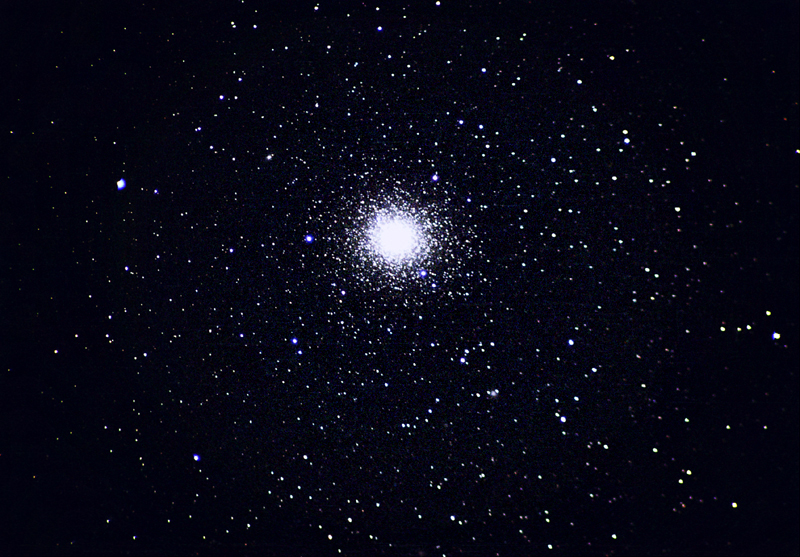
45 minutes exposure, Fuji Superia 400 film.
5" f/5 refractor, prime focus.

NGC 104, also known as 47 Tucanae is a sight that must be seen to be believed. Easily visible to the naked eye even in moderate light pollution NGC 104 is one of the showpieces of the sky. However, situated at a declination of -72, it is invisible to virtually all northern hemisphere observers.
In binoculars the cluster appears as a large ball of light, brightening towards the centre. Resolution of the outer regions is easily achieved in a small telescope, while in an 8" telescope it is an excellent sight. Unlike its near neighbour NGC 5139 (omega centauri) NGC 104 has a very rich core that is very difficult to resolve. This makes it a superb object for large telescopes where the cluster is too large for the field of view. Masses of stars then cover the view, yet the richness of the cluster is not lost due to the rich core.
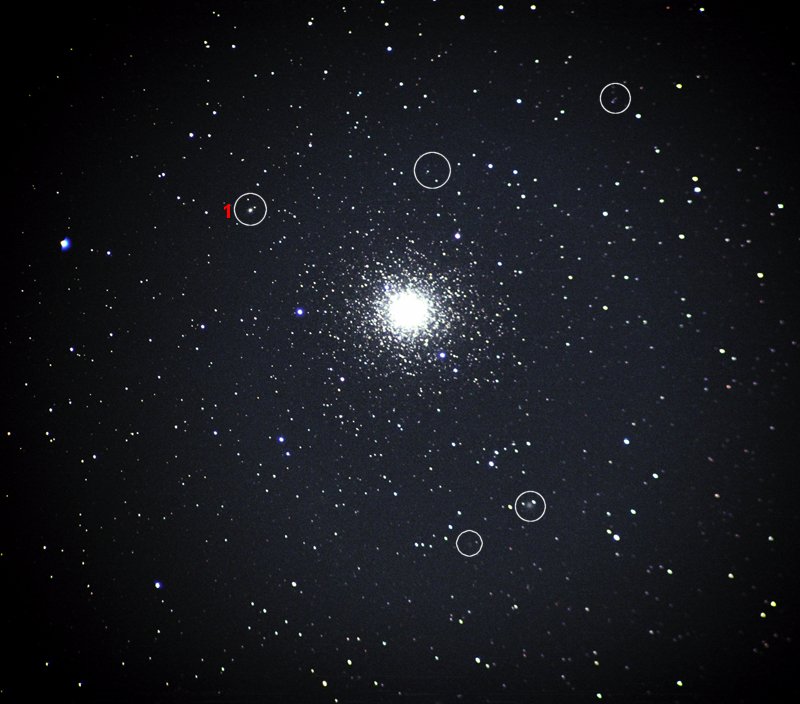
In addition to NGC 104, thee are several other faint globular clusters in the field of view. These are outlying members of the nearby Small Magellanic Cloud, and make good challenges for telescopic observation. Several of these are indicated in the photograph below. The brightest (indicated by the "1") is NGC 121. At magnitude 10.6, this should be an easy object for a 6" telescope. All of the others have a "Kron" designation, however I do not have any further information concerning them.
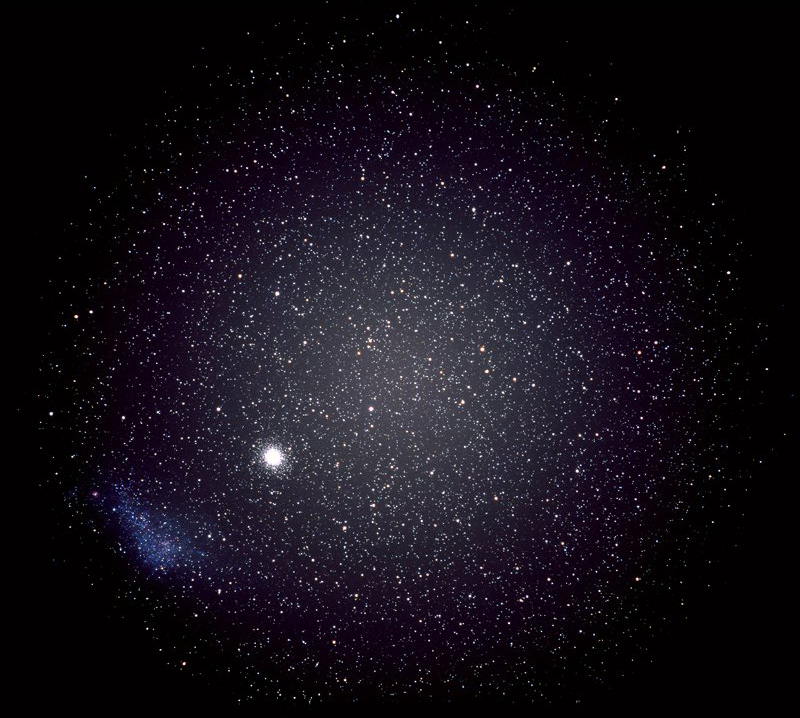
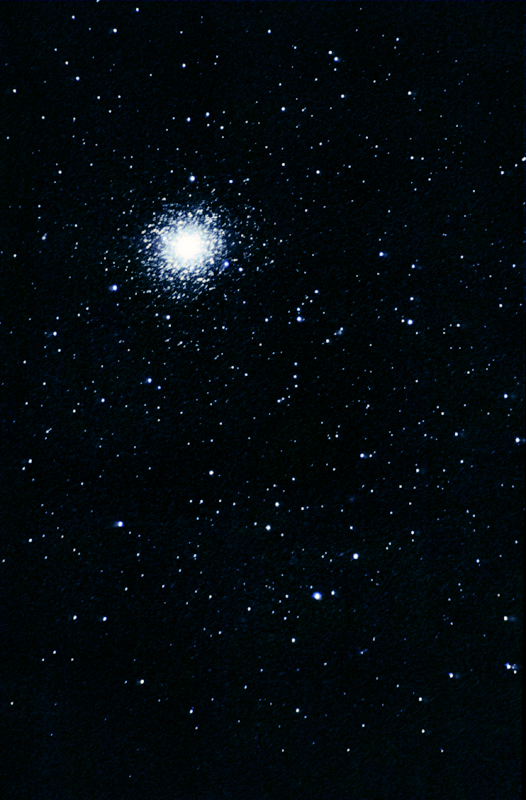
45 minutes exposure, Fuji Super HG II 400 film.
5" f/5 refractor, prime focus.
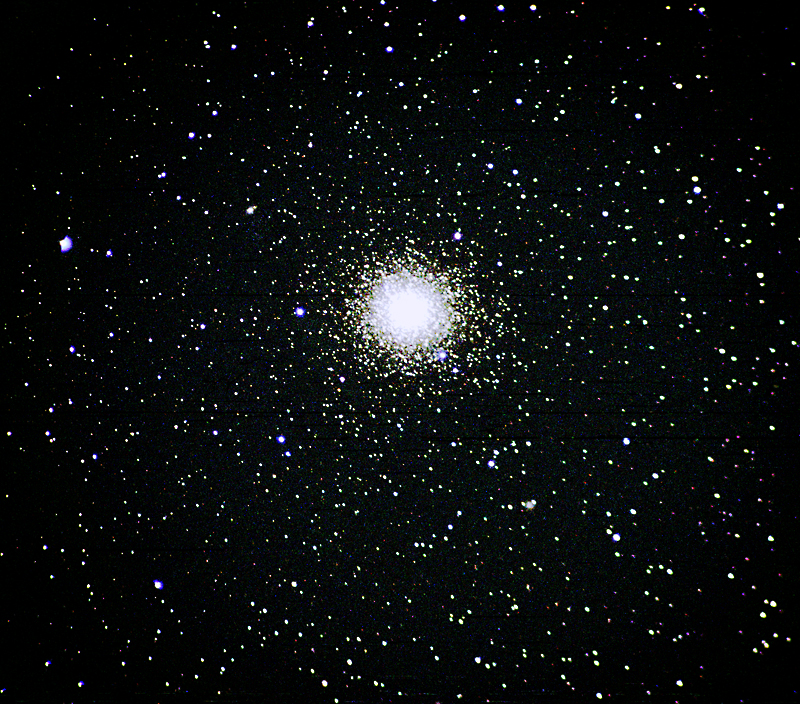
30 minutes exposure on Fuji Super HG V 400 film.
300mm f/6 newtonian telescope at prime focus.
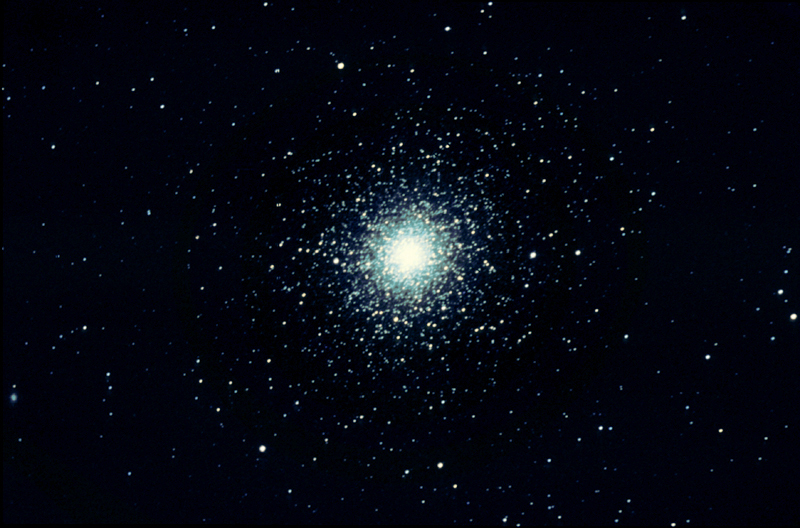
30 minutes exposure, Kodak Ektachrome 400 slide film.
300mm f/6 newtonian telescope at prime focus.
NGC 121 is just visible st the top of this image.
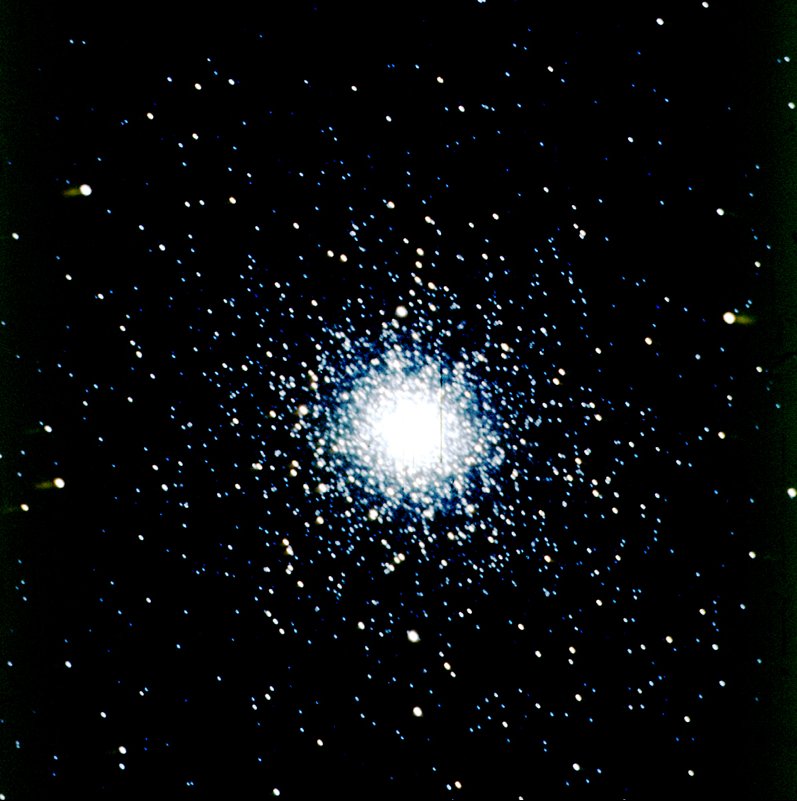
30 minutes exposure, Kodak Ektachrome 400 wide format slide film.
300mm f/6 newtonian telescope at prime focus.
On December 7, 1999, I was observing at the Chiro observatory, doing some comet hunting in the southern sky when I noticed a nebulous object not far from NGC 104. Unfortunately phone calls to the Perth Observatory revealed that it was comet 1993 J3 LINEAR. Another comet discovery down the drain!!! :-(. What is interesting however, is that it was only very recently while sorting through all of my photographs did I discover that I had photographed the comet on October 10 while taking a photograph of NGC 104!!!!! That photograph is reproduced below, and the comet is the very green object just above the cluster. Once again, it goes to show that you should always check the photographs carefully!!!
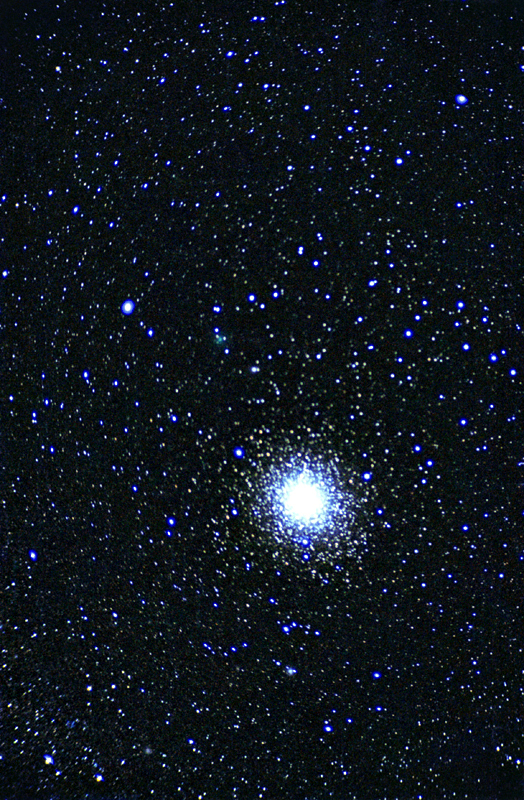
NGC 104 was also the target of my early attempts at photography, back in 1971. Although poor compared to more recent photographs I have taken, I was still quite ecstatic at the result at the time, especially considering that there was no motor drive on the telescope: only a home-made hand drive!
